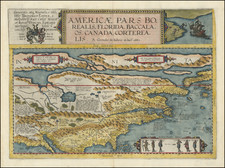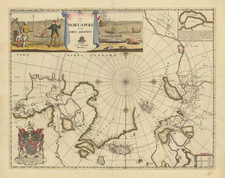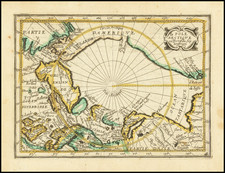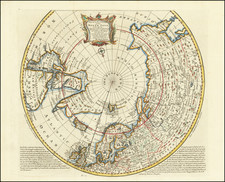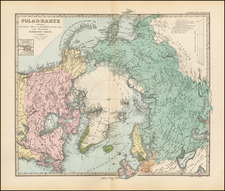This map, titled Skizze der Entdeckungen der Englischen Polar-Expedition unter Nares, 1876 (Sketch of the Discoveries of the English Polar Expedition under Nares, 1876), is a detailed chart documenting the routes and findings of the British Arctic expedition led by George Strong Nares in 1876. The expedition was a significant venture into the Arctic, aimed at reaching the North Pole.
The map delineates the intricate pathways navigated by the Nares expedition through the treacherous Arctic waters. It details the progress of the ships, HMS Alert and HMS Discovery, as they maneuvered past Greenland's coast and towards the high northern latitudes. The routes are meticulously marked, showcasing the thoroughness of the exploration efforts.
Furthermore, the map also traces the voyages of earlier explorers in the region, creating a historical context and a comparison of progress in Arctic exploration. The routes of Charles Francis Hall from his expeditions in 1871 and again in 1876 are plotted, illustrating his attempts to locate the fate of the lost Franklin expedition and his further explorations of the region.
In addition, the map features the 1670 journey of Lambert, the 1822 voyage of William Scoresby, who was a notable figure in Arctic exploration and whaling, and the 1869 path of a vessel named Schiff. It also depicts the journey of Douglas Clavering in 1823, who was one of the first to make contact with the indigenous people of East Greenland, and the 1827 northernmost travels of William Edward Parry, which set a record at that time for the highest latitude reached.
The Skizze der Entdeckungen der Englischen Polar-Expedition unter Nares, 1876 map presents a historical tableau of Arctic exploration with a focus on the 1876 expedition led by George Strong Nares. It meticulously documents the challenging journey of the British ships, HMS Alert and HMS Discovery, which sought to reach the North Pole and make significant geographical and scientific contributions.
The voyages of Charles Francis Hall are noted for the years 1871 and 1876, indicating his persistent endeavors in the Arctic, which included seeking the lost Franklin expedition and later charting parts of the Northwest Passage.
Johannsen's expeditions of 1870 and 1871 are depicted, albeit less is known about this explorer, the map suggests he was active in the region during significant years of polar exploration. Wiggins' journey in 1874 adds to this tapestry of exploration, although specific details of his contributions are not widely documented, the inclusion on the map indicates a voyage of note.
The Austrian explorer Julius Payer, who co-led the Austro-Hungarian North Pole expedition, is recorded for his 1871 expedition. His endeavors, particularly in the discovery of Franz Josef Land, are crucial to the history of Arctic exploration. The presence of Wasser and Luft in 1871 on the map likely represents an expedition focused on scientific observations of water and air, key elements in understanding the polar climate.
Woronin's explorations in 1872 are also etched onto the map, another piece in the puzzle of the Arctic's exploration history. Although not as well-known as some of his contemporaries, Woronin's inclusion suggests he made contributions worthy of record during this era of exploration.
August Heinrich Petermann (1822-1878) is a renowned German cartographer of the nineteenth century. Petermann studied cartography at the Geographical Art-School in Potsdam before traveling to Edinburgh to work with Dr. A. Keith Johnston on an English edition of Berghaus’ Physical Atlas. Two years later he moved to London, where he made maps and advised exploratory expeditions as they set off to explore the interior of Africa and the Arctic.
In 1854, Petermann returned to Germany to be Director of the Geographical Institute of Justus Perthes in Gotha. There, he was the editor of the Geographische Mittheilungen and Stieler’s Handatlas. The Royal Geographical Society of London awarded him their Gold Medal in 1860. He continued his interest in exploration in Germany, fundraising for the German Exploring Expeditions of 1868 and 1869-70, which sought an open Arctic sea. Tragically, he committed suicide in 1878.









![[Nova Zembla]](https://storage.googleapis.com/raremaps/img/small/75007.jpg)
